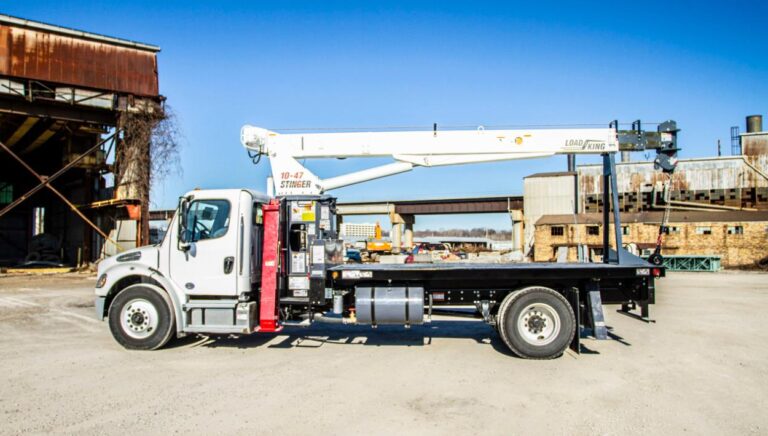How To Fix A Leaky Back Window On A Truck? [Explained]
Are you looking for How To Fix A Leaky Back Window On A Truck? involves identifying the source of the leak, choosing the right tools and materials, and applying a precise repair method. This article provides a step-by-step guide to efficiently and effectively address this common issue.
Key Takeaways
- Identifying the source of the leak.
- Selecting appropriate tools and materials.
- Step-by-step repair process.
- Preventive measures to avoid future leaks.
How To Fix A Leaky Back Window On A Truck?
Fixing a leaky back window on a truck involves several steps, each important to ensure a thorough and lasting repair. Here’s a detailed guide on how to address this issue:
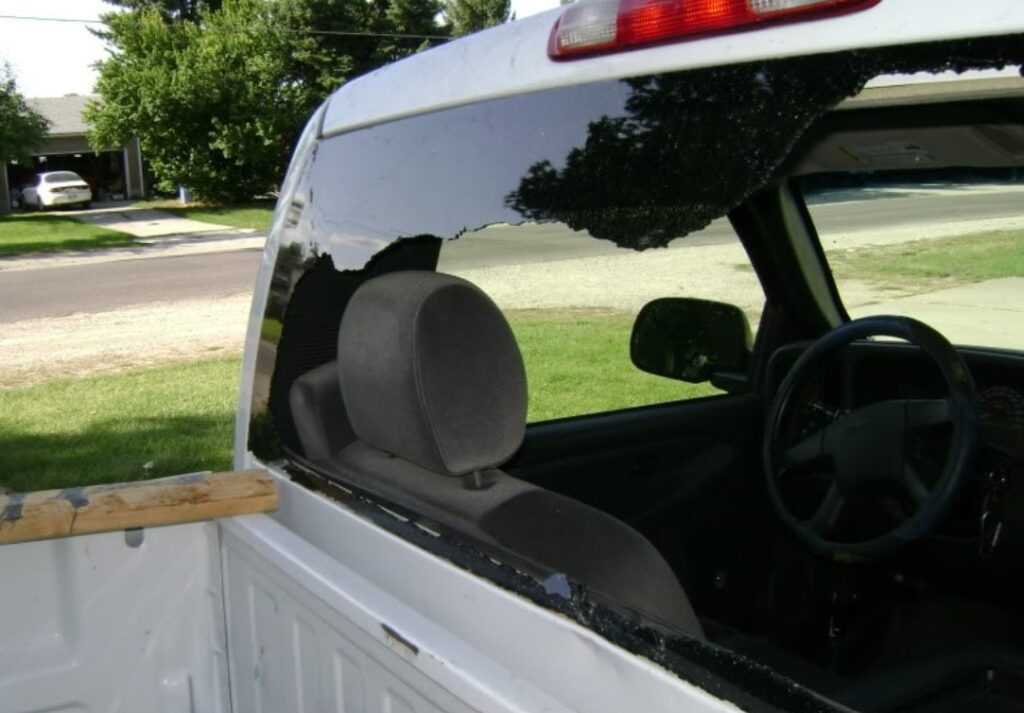
1. Identify the Source of the Leak
- Inspect the Window: Carefully examine the back window and surrounding area for any visible signs of the leak. Look for water trails, moisture marks, or rust, which can indicate where the leak is originating.
- Check the Seals: Pay special attention to the window seals. Over time, these can become dry, cracked, or shrink, causing leaks.
2. Gather Necessary Tools and Materials
- Sealant: Choose a high-quality, automotive-grade sealant. Silicone-based sealants are often recommended for their durability and flexibility.
- Weather Stripping: If the existing weather stripping is damaged, have a replacement ready.
- Cleaning Supplies: Gather cleaning supplies like a window cleaner, cloth, and a scraper for removing old sealant.
- Basic Tools: Ensure you have tools like a screwdriver, pliers, and perhaps a caulking gun for the sealant.
3. Prepare the Area
- Clean the Window: Thoroughly clean the window and frame. Any dirt, debris, or old sealant can prevent the new sealant from adhering properly.
- Remove Old Sealant: Use the scraper to remove any remnants of old sealant, being careful not to damage the glass or truck body.
4. Apply New Sealant
- Apply Sealant Evenly: Using the caulking gun, apply the new sealant evenly along the area where the glass meets the window frame. Ensure that all gaps are covered.
- Smooth Out Sealant: Use a small, flat tool to smooth out the sealant for an even application.
5. Replace Weather Stripping (if necessary)
- Remove Old Stripping: If the weather stripping is damaged, remove it entirely.
- Fit New Stripping: Carefully fit the new weather stripping around the window. Make sure it sits snugly and is aligned properly.
6. Allow Time for the Sealant to Cure
- Curing Time: Follow the manufacturer’s guidelines on curing time for the sealant. It’s crucial to let it dry completely before exposing the window to water or moisture.
7. Test for Leaks
- Water Test: Once the sealant is dry, gently spray water around the window to test for leaks. Ensure there’s no water seeping through.
- Visual Inspection: Do a thorough visual inspection to check for any missed spots or gaps in the sealant.
8. Additional Sealing (if necessary)
- Reapply Sealant: If you find any small leaks during the test, reapply the sealant in those areas and allow it to cure again.
9. Regular Maintenance
- Regular Checks: Regularly inspect the back window for signs of wear or potential leaks.
- Prompt Repairs: Address any issues immediately to prevent further damage.
Sealing and Finishing Touches
Ensuring a Leak-Free Window
After applying the sealant and replacing the weather stripping, it’s crucial to check for any remaining gaps or misalignments. A thorough inspection ensures a leak-free back window and prolongs the lifespan of the repair.
Inspection and Testing
- Check for gaps or misalignments.
- Test for leaks after repair.
Preventative Measures

Avoiding Future Leaks
Prevention is better than cure. Regular maintenance and inspections can prevent future leaks. Regularly check the condition of the window seals and weather stripping, and address any issues promptly.
Maintenance Tips
- Regularly inspect window seals.
- Promptly repair any damage.
Understanding the Causes of a Leaky Back Window
Causes of Window Leaks
Before diving into the repair process, it’s essential to understand the common causes of a leaky back window. Typically, leaks can result from worn out seals, cracks in the window, or improper installation. Identifying the root cause is the first step in ensuring a successful repair.
Common Leak Sources
- Worn out rubber seals.
- Cracks or damage in the window.
- Flawed installation or alignment issues.
Preparing for the Repair
Gathering Necessary Tools and Materials
Preparation is key when planning to fix a leaky back window. Ensure you have all the necessary tools and materials before starting. This includes sealants, weather stripping, and basic hand tools. A well-prepared toolkit simplifies the repair process and increases the chances of a successful fix.
Essential Tools and Materials
- High-quality sealant.
- Replacement weather stripping.
- Basic hand tools (screwdrivers, pliers).
Why Is The Back Glass On My Truck Leaking?
The back glass of a truck can leak due to various reasons. Common causes include deteriorated seals, damaged or cracked glass, improper installation, or alignment issues.
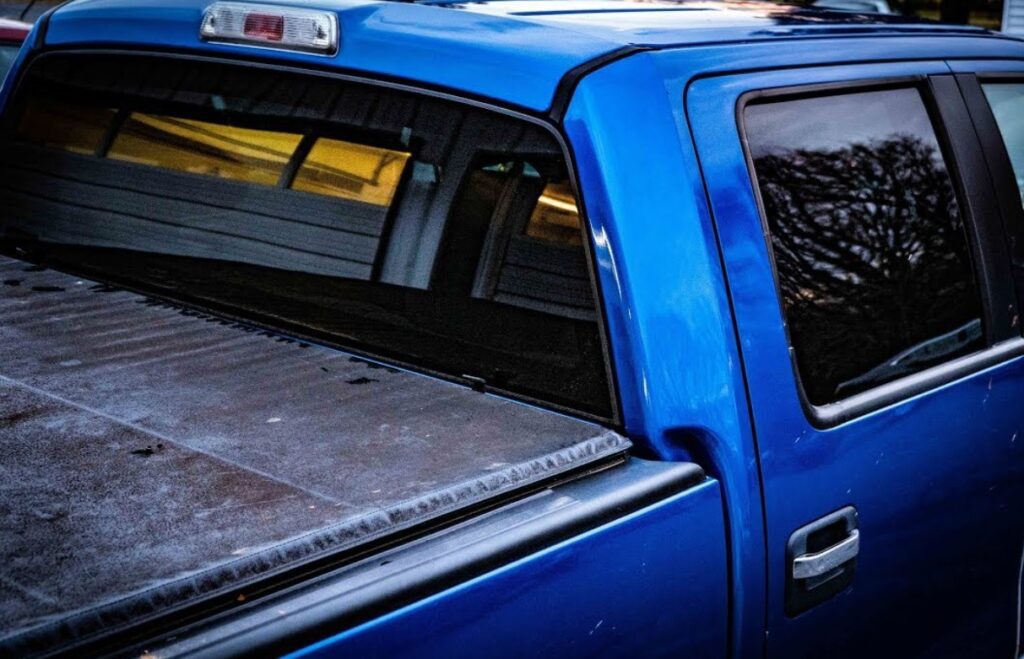
Over time, the rubber seals around the window can dry out and shrink, losing their effectiveness in keeping water out. Additionally, any impact or stress on the glass might cause micro-cracks, which can eventually lead to leaks. Ensuring regular maintenance and inspections can help identify these issues early on.
How Do You Fix A Leaky Window Without Removal?
Fixing a leaky window without removal involves addressing the seal and not the glass itself. First, identify the source of the leak, which is often around the seal or window frame.
Clean the area thoroughly and apply a high-quality automotive sealant specifically designed for vehicle windows. Applying weather stripping or sealant tape can also be effective. It’s crucial to allow the sealant to dry fully, as per the manufacturer’s instructions, to ensure a watertight seal.
Can You Reseal A Leaking Window?
Yes, you can reseal a leaking window. This process typically involves removing the old sealant, cleaning the area thoroughly to remove any residue or debris, and then applying a new layer of automotive-grade sealant.
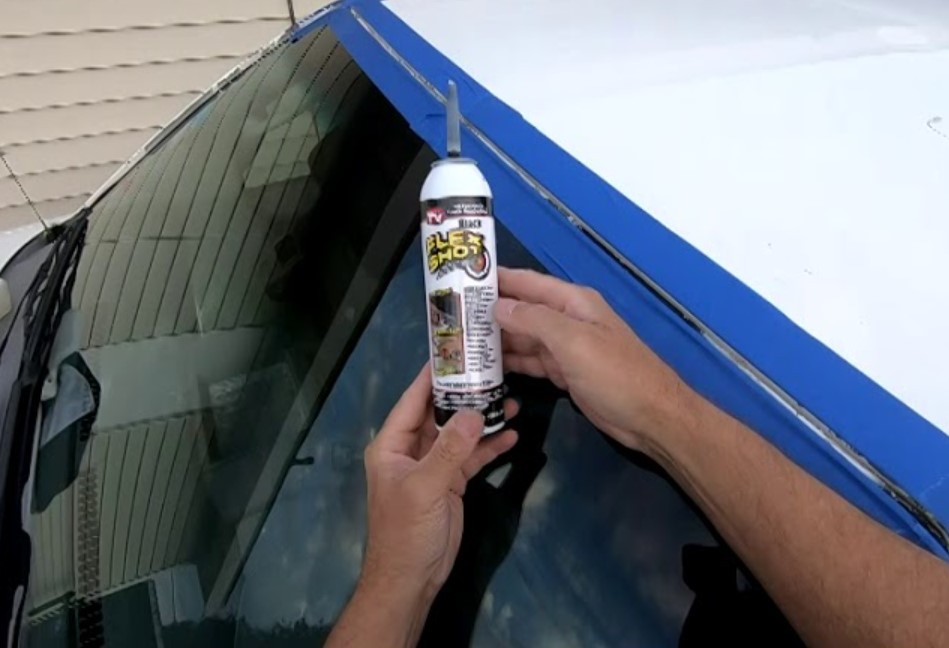
Ensure that the sealant is applied evenly and covers any gaps or cracks completely. It’s important to choose a sealant that is durable and designed for use in automotive applications to withstand weather conditions and temperature changes.
Why Are My Car Windows Leaking During Heavy Rain?
The window of the Car may leak during heavy rain primarily due to worn-out or damaged seals. Over time, exposure to the elements can cause the rubber seals to degrade, losing their ability to keep water out.
Another reason might be clogged drainage channels within the door or window frame, preventing water from draining properly and causing it to seep through the seals. Regularly cleaning these channels and replacing worn seals can help prevent leaks during heavy rain.
How To Fix My Leaking Back Window In My Chevy Silverado?
To fix a leaking back window in a Chevy Silverado, start by inspecting the window seals and gaskets for any signs of wear or damage. If the seals are degraded, they should be replaced.
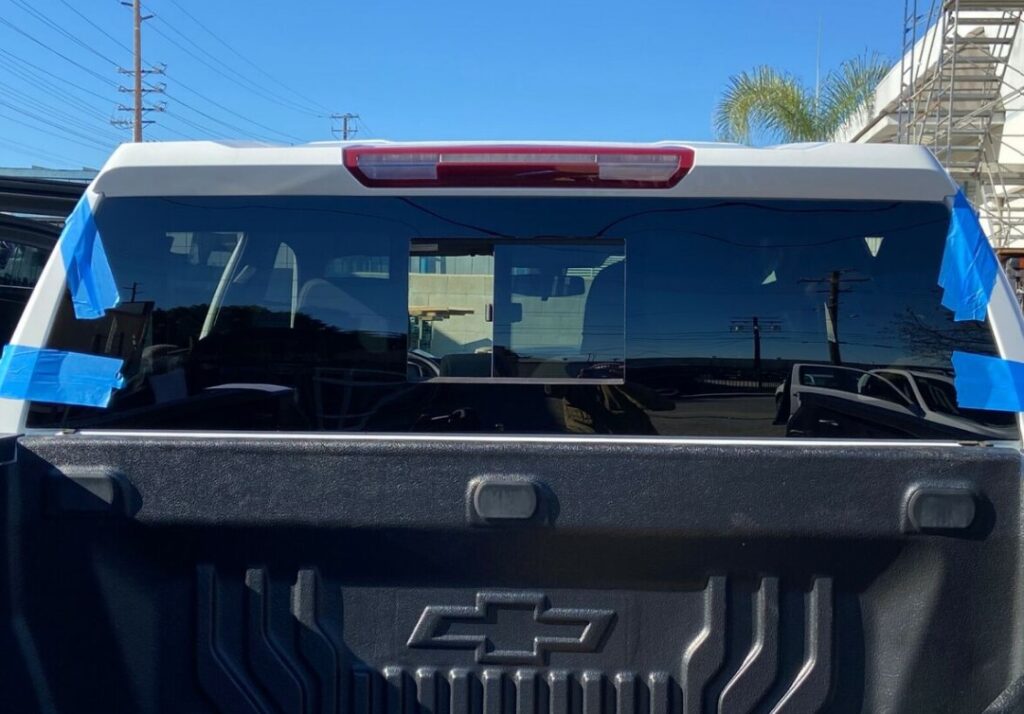
Clean the area around the window thoroughly and apply a new automotive sealant. For cracks or damage to the window itself, consider using a glass repair kit if the damage is minor.
For more significant issues, it may be necessary to consult a professional or consider replacing the window. Regular maintenance and prompt attention to any signs of leaks can prevent more significant problems down the line.
Conclusion
Repairing a leaky back window on a truck is a manageable task with the right knowledge and tools. By understanding the causes, preparing adequately, and following a detailed repair guide, you can ensure a leak-free window.
Regular maintenance and preventative measures further protect against future leaks. Fixing a leaky back window not only preserves your truck’s condition but also enhances your driving experience.
Frequently Asked Questions
Is it necessary to remove the back window to fix a leak?
Not always. Many leaks can be fixed without removing the window, especially if they’re due to issues like worn-out seals or minor gaps. However, if the leak is due to a problem with the window’s alignment or a severe crack, removing the window might be necessary.
What causes the rubber seals around the back window to deteriorate?
The rubber seals can deteriorate due to exposure to the elements, such as UV rays from the sun, extreme temperatures, and moisture. Aging and general wear and tear also contribute to the breakdown of the seals over time.
Can weather stripping be replaced without professional help?
Yes, replacing weather stripping is a relatively straightforward process that can be done without professional help. You will need to purchase the right type of weather stripping for your truck and follow the installation instructions carefully.
What should I do if I find a crack in my truck’s back window?
If the crack is small, you may be able to use a glass repair kit to fix it. However, larger cracks often require the window to be replaced. In such cases, consulting with a professional is advisable.

Welcome to the exhilarating world of Matt Rex, a professional car racer turned renowned vehicle enthusiast. Immerse yourself in his captivating blog as he shares heart-pounding adventures, expert reviews, and valuable insights on cars, trucks, jets, and more. Fuel your passion for speed and discover the beauty of vehicles through Matt’s engaging stories and meticulous expertise. Join the ever-growing community of enthusiasts who find inspiration and expert advice in Matt Rex’s blog—a digital hub where the thrill of speed meets the pursuit of knowledge.






